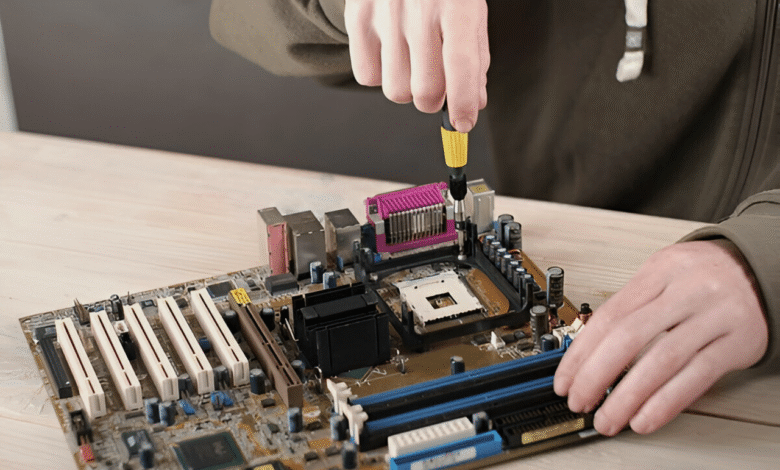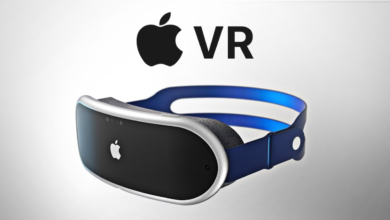Exploring the Rise of ARM-Based Chips in PCs
ARM-Based Chips are transforming computing with unmatched efficiency. Discover how ARM chips challenge x86 dominance in performance.

The computing landscape is undergoing a seismic shift as ARM-based chips in PCs challenge the decades-long dominance of x86 processors. Traditionally confined to smartphones and tablets, ARM architecture is now making significant inroads into personal computers, driven by its superior power efficiency and increasingly competitive performance. Tech giants like Apple, Qualcomm, and Microsoft are leading this revolution, with Apple’s M-series chips demonstrating that ARM processors can not only match but often surpass their x86 counterparts in both speed and energy efficiency.
The appeal of ARM-based chips in PCs lies in their fundamental architectural advantages. Unlike traditional x86 processors that use complex instruction sets, ARM chips employ a streamlined RISC (Reduced Instruction Set Computing) design that executes commands more efficiently. This results in cooler operation, longer battery life, and the ability to create thinner, lighter devices without compromising performance. As software ecosystems evolve to better support ARM architecture, and as more developers optimize their applications for these chips, we’re witnessing the beginning of what could become the new standard in personal computing.
Exploring the Rise of ARM-Based Chips in PCs
The Evolution of ARM
ARM (Advanced RISC Machine) processors were originally designed for low-power mobile devices, but advancements in semiconductor technology have enabled them to compete in the PC market. Unlike x86 chips, which use a complex instruction set computing (CISC) architecture, ARM employs a reduced instruction set computing (RISC) approach, allowing for more efficient execution of commands with lower power consumption.
Reduce Instruction ARM Employe
ARM processors employ a reduced instruction set computing (RISC) architecture, which uses simpler, more efficient commands compared to traditional x86 chips. This streamlined design allows ARM-Based Chips CPUs to execute instructions faster while consuming significantly less power. By focusing on a smaller set of optimized instructions, ARM chips achieve better performance-per-watt efficiency, making them ideal for mobile and portable devices.
ARM’s Modular Architecture
Another major advantage is scalability ARM’s modular architecture allows chip designers to customize cores for specific workloads, optimizing performance for different applications. For example, Apple’s M-series chips combine high-performance and high-efficiency cores to balance speed and battery life dynamically.
Power Efficiency
ARM’s RISC architecture enables superior energy efficiency, allowing devices to run longer on battery power while generating less heat. This efficient design not only enables all-day battery life in mobile devices and laptops but also reduces heat generation, allowing for thinner, fanless designs that don’t require active cooling systems to prevent thermal throttling.
Mobile Dominance
ARM processors power over 95% of smartphones and tablets due to their compact design and low power consumption. ARM’s licensing model allows companies like Apple and Qualcomm to design optimized chips for specific needs, improving performance and features.
ARM-Based PCs
ARM-based PCs are revolutionizing personal computing by delivering unprecedented power efficiency and performance in sleek, fanless designs. These systems leverage ARM’s RISC architecture to offer all-day battery life while maintaining competitive processing power for most productivity tasks. Apple’s M-series MacBooks have demonstrated ARM’s potential, achieving performance parity with x86 chips while consuming far less energy.
ARM Chips Dominate Smartphones
ARM processors dominate the smartphone market due to their superior power efficiency and thermal performance, which are critical for battery-powered mobile devices. Their RISC (Reduced Instruction Set Computing) architecture enables faster, more efficient processing while consuming minimal energy compared to x86 alternatives.
Key Advantages of ARM-Based Processors
One of the most significant benefits of ARM-based chips in PCs is their exceptional energy efficiency. Because ARM processors generate less heat, they enable sleeker, fanless laptop designs without sacrificing performance. This makes them ideal for ultraportable devices where battery life is a critical factor. Additionally, ARM chips often integrate powerful graphics.
Challenges
Despite their advantages, ARM-Based Chips processors face several hurdles in widespread PC adoption. Software compatibility remains a significant challenge, as many professional and legacy applications were designed for x86 architecture. While emulation layers like Apple’s Rosetta 2 and Microsoft’s ARM-compatible Windows help bridge this gap, they can introduce performance overheads.
ARM’s Flexible Licensing Model
ARM’s flexible licensing model allows companies to customize processor designs for their specific needs, offering three main tiers: architectural licenses for complete customization, core licenses for pre-designed CPU blueprints, and ready-made processor licenses. This approach has enabled tech giants like Apple and Qualcomm to develop highly optimized chips (M-series and Snapdragon) while letting smaller firms leverage ARM’s proven designs.
Limitations
Another limitation is the current lack of high-performance ARM alternatives outside of Apple’s ecosystem while Qualcomm’s Snapdragon X Elite shows promise, it has yet to match the raw performance of Apple’s silicon or high-end x86 chips from Intel and AMD. Furthermore, the PC software ecosystem is deeply entrenched in x86, meaning developers must prioritize ARM-native versions of their applications for the transition to succeed.
Industry Adoption
Apple’s successful transition from Intel to its custom ARM-Based Chips silicon has set a precedent for the rest of the industry. Microsoft, too, has been investing heavily in ARM support for Windows, partnering with Qualcomm to develop competitive chips like the Snapdragon X Elite. If other major PC manufacturers follow suit, we could see a broader shift toward ARM-based systems in the coming years.
Future Outlook
The adoption of ARM-based chips in PCs will accelerate as software compatibility improves and more developers optimize applications for ARM architecture. Major manufacturers beyond Apple, including Qualcomm and potentially AMD, will introduce competitive ARM processors for Windows laptops, expanding consumer choice. Advances in chip fabrication (3nm and below) will further boost ARM’s performance.
Read More: How to Manage Finances with the Best Budgeting Apps
Conclusion
The rise of ARM-based chips in PCs marks a pivotal moment in computing history, challenging the long-standing dominance of x86 processors. With unmatched power efficiency, thermal performance, and growing software support, ARM architecture is rapidly becoming a viable alternative for a wide range of computing needs. While challenges like software compatibility and industry-wide adoption remain, the progress made by Apple, Qualcomm, and Microsoft suggests that ARM’s influence will only expand in the coming years.
As the technology matures, consumers can expect a new generation of PCs that combine high performance with exceptional battery life. Whether for everyday productivity, professional workloads, or even gaming, ARM-Based Chips processors are set to play a central role in shaping the future of computing. Additionally, advancements in chip fabrication, such as 3nm and smaller process nodes, will further enhance ARM’s performance and efficiency, making it viable for high-end gaming, content creation, and enterprise applications.
FAQs
Why are ARM-based chips becoming popular in PCs?
ARM processors offer superior power efficiency and thermal performance, making them ideal for thin, lightweight laptops with extended battery life.
Can ARM-based PCs run all Windows applications?
Most applications work via emulation, but some x86 programs may experience reduced performance until more native ARM software becomes available.
How do Apple’s M-series chips compare to Intel and AMD processors?
Apple’s ARM-based chips often outperform Intel and AMD in efficiency and integrated graphics while delivering competitive CPU performance for most tasks.
Will gaming PCs adopt ARM architecture in the future?
While still uncommon, advancements in GPU integration and developer support could make ARM-Based Chips gaming PCs a reality in the coming years.
Are ARM-based PCs more expensive than traditional x86 PCs?
Pricing varies, but Apple’s ARM-based Macs are competitively priced, while Windows ARM laptops may carry a premium due to early adoption costs.











